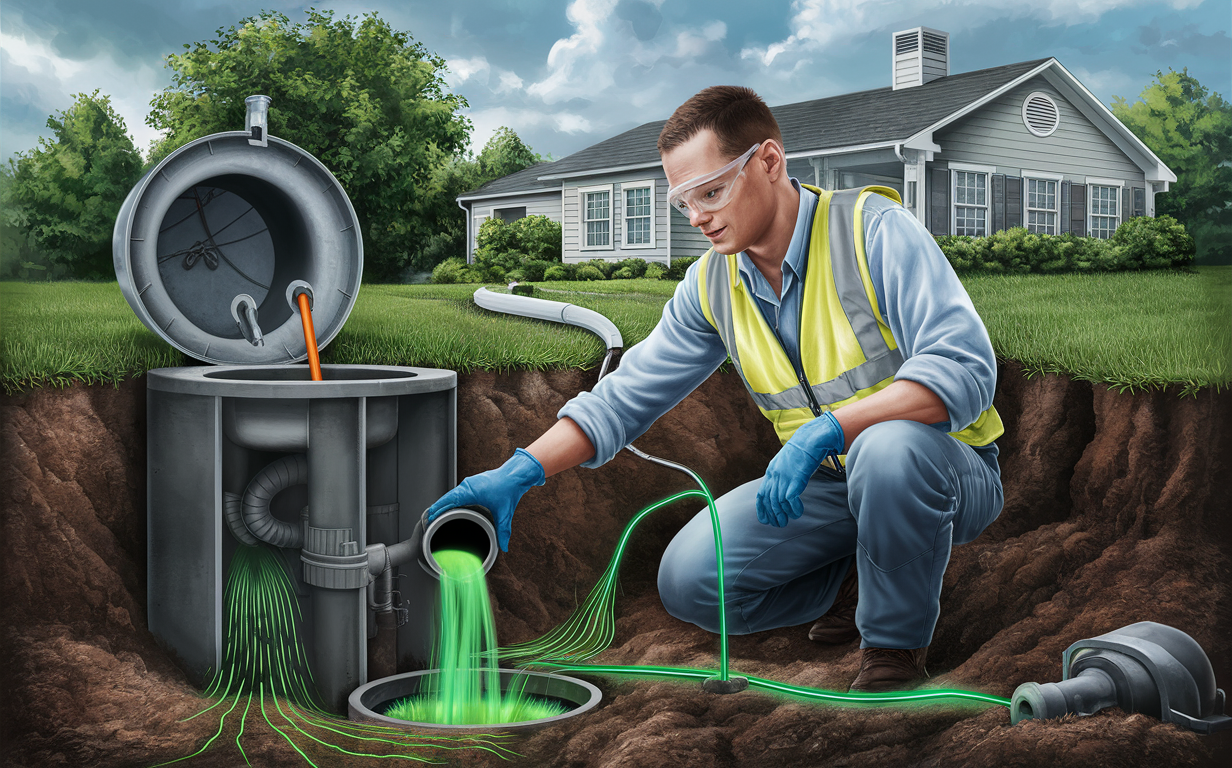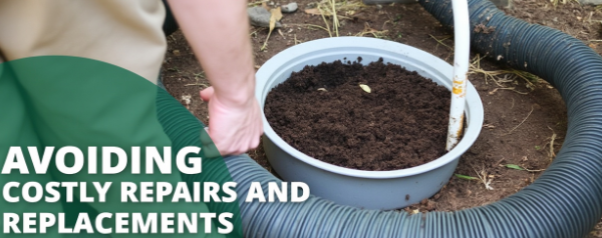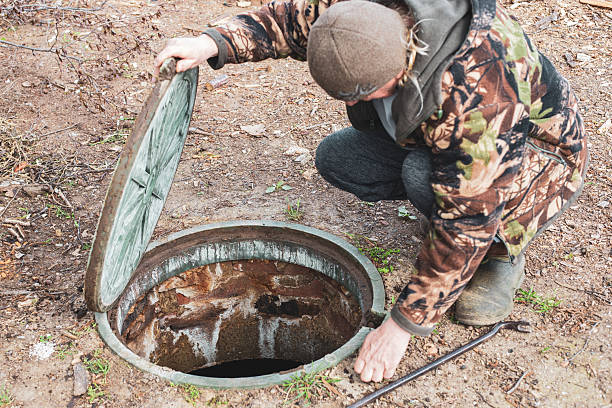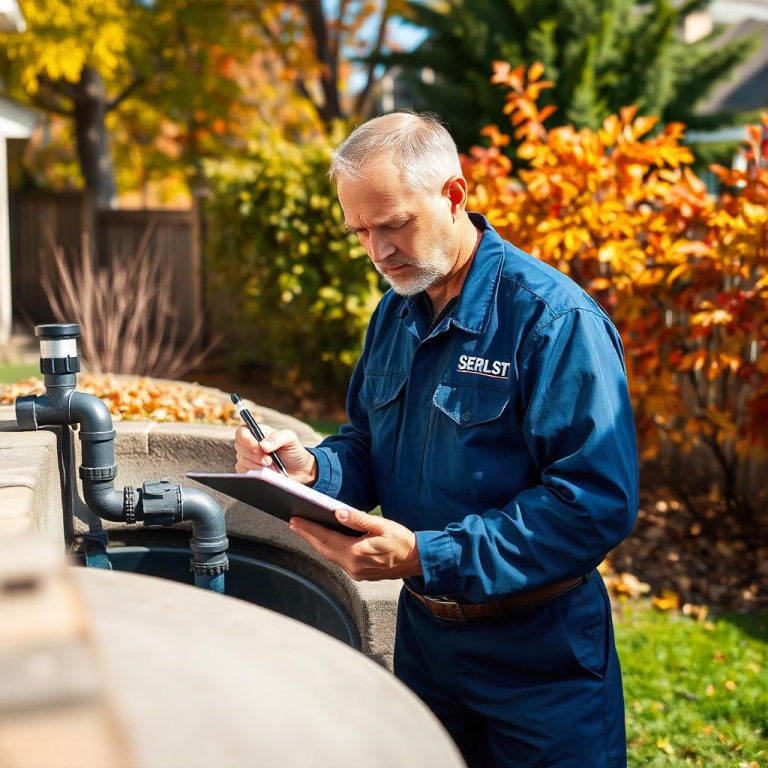Uncover Hidden Leaks: Dye Testing and Leak Detection for Septic System Inspections
When it comes to maintaining a septic system, one of the most effective methods for identifying leaks and ensuring everything is working correctly is dye testing. This technique involves introducing a colored dye into the system to trace and detect leaks, which can be a game-changer for homeowners and property managers.
Table of Contents
Key Takeaway
- Dye testing is a straightforward and efficient method to detect leaks in septic systems.
- This method is useful for identifying issues in both residential and commercial septic setups.
- Leak detection using dye can help prevent costly repairs and environmental damage.
- Understanding the process and benefits of dye testing can help maintain a healthy septic system.
What is Dye Testing and Leak Detection for Septic System Inspections?
Dye Testing and Leak Detection for Septic System Inspections involves adding a non-toxic, colored dye to the system to trace its flow and identify any leaks or failures. The dye is usually bright and easily visible, making it easier to spot where the system might be leaking.
How Does Dye Testing and Leak Detection for Septic System Inspections Work?
- Introduction of Dye: A specific quantity of dye is added to the system, typically through a toilet or drain.
- Observation Period: The system is monitored to see where the dye appears. If the dye shows up on the ground surface or in unintended areas, it indicates a leak.
- Leak Identification: The exact location and severity of the leak are determined based on where the dye is detected.
Benefits of Dye Testing and Leak Detection for Septic System Inspections
Early Detection of Problems
One of the most significant advantages of dye testing is the early detection of leaks. By identifying issues early, homeowners can address problems before they escalate into more severe and costly repairs.
Environmentally Friendly
The dye testing and leak detection for septic system inspectionsare non-toxic and safe for the environment. This ensures that while you are checking for leaks, you are not causing any harm to the surrounding area.
Cost-Effective
Dye testing is a relatively inexpensive method compared to other forms of leak detection. It provides a quick and reliable way to check for leaks without requiring extensive equipment or labor.
Step-by-Step Guide to Dye Testing and Leak Detection for Septic System Inspections
1. Gather Materials
Before you begin, you’ll need to gather the necessary materials. This includes a septic dye test kit, which typically contains the dye and instructions for use.
2. Add the Dye
Introduce the dye into the system through a toilet or drain. Follow the instructions on the dye kit for the correct amount to use.
3. Monitor the System
Flush the toilet or run water through the drain to ensure the dye moves through the system. Monitor the area around your septic system for any signs of the dye appearing on the surface.
4. Record Findings
Take note of where and when the dye appears. This information can help you or a professional pinpoint the location and extent of any leaks.
Common Issues Detected Through Dye Testing

Leaking Pipes
Dye testing and leak detection for septic system inspections can reveal leaks in pipes that are part of the septic system. This includes pipes leading to and from the septic tank as well as distribution pipes in the leach field.
Septic Tank Failures
If the dye appears on the ground above the septic tank, it could indicate a failure in the tank itself. This might be due to cracks, corrosion, or other structural issues.
Leach Field Problems
The leach field, or drain field, is where treated wastewater is dispersed into the soil. Dye appearing in the leach field area could indicate that the system is not dispersing wastewater correctly, suggesting blockages or overloading.
Comparison of Leak Detection Methods
| Method | Cost | Accuracy | Environmental Impact | Time Required |
|---|---|---|---|---|
| Dye Testing | Low | High | Low | Short |
| Camera Inspections | Medium | High | None | Medium |
| Smoke Testing | Medium | Medium | Low | Short |
| Pressure Testing | High | High | None | Long |
Potential Indicators of Septic System Issues
| Indicator | Possible Cause | Recommended Action |
|---|---|---|
| Soggy patches | Leaking pipes or tank | Perform a dye test |
| Unpleasant odors | Full or failing septic system | Schedule a pumping |
| Slow drains | Blockages or leach field issues | Conduct a camera inspection |
Tips for Effective Dye Testing
Use the Right Dye
Ensure you are using a dye specifically designed for septic systems. These dyes are formulated to be visible and safe for the environment.
Follow Instructions
Always follow the instructions provided with the dye test kit. Using too much or too little dye can affect the accuracy of the test.
Monitor Regularly
Regular monitoring and dye testing can help maintain your septic system. Schedule tests at least once a year or when you notice any signs of potential issues.
Signs You Need a Dye Test
- Unexplained wet spots in your yard.
- Foul smells around the septic system area.
- Slow-draining sinks, toilets, or showers.
- Unusual plant growth around the septic system.
- Frequent backups in your plumbing.
Conclusion
Dye testing is an invaluable tool for maintaining the integrity of your septic system. It’s a simple, cost-effective, and environmentally friendly method that can help you identify leaks and rectify issues before they become significant problems.
By incorporating regular dye testing into your maintenance routine, you can ensure the longevity and efficiency of your septic system, saving you time and money in the long run. For more information, you can visit our website or contact us.







